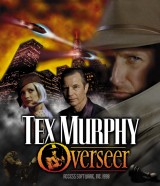Review for The Talos Principle 2

Video games have proven to be an excellent medium for storytelling, for writers and authors to convey settings and narratives that express their own inspirations and inner universes. However, there have been only a few that make the player think deeply. RPGs and story-driven adventures give players agency, but not in ways that make them stop and reflect on themselves and how they see humanity, art, and life. The Talos Principle 2, in a surprising twist, does this substantially while also being a complex puzzle game.
Developed by Croteam and published by Devolver Digital, The Talos Principle 2 takes place after the first game, set in a world where humans have been wiped out by a virus and the continuation of the species has been entrusted to robots created by a scientist named Alexandra Drennan. The protagonist is 1k, named for being the 1000th robot created to reach a milestone called “The Goal,” which is meant to signal the end of creating robots. As celebrations begin, however, a projection of the mythical Greek god Prometheus calls robots to a remote island that is supposed to contain a secret that will drive “humanity” forward. The player character is sent with an expeditionary group to investigate. The island turns out to be a puzzle haven with technology and secrets that significantly impact the larger narrative.
One of the game’s key strengths is the story, both in plot and values. All the characters in the expedition express the essential talking points, such as Byron, who is about expanding “humans” beyond “The Goal;” Alcatraz, who is very cautious about “human” development because of the mistakes their creators made in the past; and Melville, who is more concerned about the state of their city, New Jerusalem, and how worn and torn it is becoming.
There is also the Social Media tab, which players look at from time to time and see posts from New Jerusalem citizens about the story’s developments, art, philosophy, and more. It all culminates in a story that raises concerns about progress vs. regression, taking the mistakes of history into account vs. moving forward toward the future, the collective vs. the individual, and more. There are also hologram constructs like Pandora, who will insist that humanity is not ready for what Prometheus has to offer; the Sphinx and her constant riddles and questions; and Prometheus himself, who is confident in humanity’s abilities.
Religious undertones are also thrown into the mix, the most obvious being the robot’s city, New Jerusalem, founded by the first robot who gathered twelve followers to establish their new civilization (a reflection of Moses and the twelve tribes). Some barcodes contain biblical scripture and collectible palm readers inquiring about religion’s relevance. It is also central to the plot since “The Goal” and Alexandra Drennan are treated as sacred by most.
The player, 1k, can contribute to the conversation through dialogue trees, and what 1k says can influence future events in the game. More than once for this review, I stopped to think about my own answers, beliefs, and values, something no other game has ever really made me do. In other games, most choices boil down to what is right or wrong, what is best, which can often be looked up in a guide. While there are elements of this in The Talos Principle 2, it is a more open-ended discussion that is as hopeful or bleak as the player wants it to be.
The gameplay itself contains a similar level of complexity. It is primarily in the first-person perspective, though players can set it to third-person if they want to. Players move and interact with specific environments using the keyboard while looking around or picking up items with the mouse. It is an open world with the map divided into North, East, South, and West, each separated into three sections. The main objective is to solve enough puzzles to build a bridge and activate a tower in each section. Activating three towers gets you into a portion of the megastructure in the center.
That seems simple enough, but it’s the puzzles where the complexity comes into play. Starting sections have players connect energy beams to crystals, which open the blue energy doors, sometimes elevated by boxes and fans. But every section adds new mechanics, such as jammers that deactivate technology in front of them, crystals that combine two energy beams to make a new color, clones of 1k, etc. It gets a lot more sophisticated, requiring experimentation and creativity. Ideally, an individual puzzle can be solved in a minute. Realistically, it may take 5-20 minutes, maybe more, on a first playthrough. Some players may derive satisfaction from embracing the unorthodox. Otherwise, puzzles can be skipped by finding Prometheus flames scattered around the world. These seem to be in limited supply, so trying to solve the puzzle first is advised.
The Talos Principle 2 does have a couple of drawbacks: primarily a nitpick and a control issue. Being open-world, there are other collectibles like palm-activated terminals with valuable information, hidden labs, secret puzzles, and statues to find and activate. This is all fine, but there is no fast-traveling to areas within a section’s map, as most open-world games allow. The only sort of travel is between sections. Fast-traveling to already discovered locations would have saved some time, especially with how huge each section can be.
The issue with the controls may be an individual problem and not widespread. Sometimes, I lost control of my character’s movement, and 1k moved independently for a few seconds or just stopped even when a movement key was held down. These moments were infrequent but did, more than once, cause 1k to take a plunge at inopportune times, which was annoying.
The presentation is also very well done. Every island corner has a distinct and wonderous biome, like the North’s snowy and mountainous region or the East’s grassy and temperate climate. Especially in the more grassy biomes, observing foliage closely shows them moving with the wind or doing erratic dances. Textures can look incredibly detailed up close but slightly muddy in certain places or from farther distances.
The character models and voices aren’t bad, but only a few rise to excellence. Most of the robots look the same, just with different color shadings, and their facial expressions are almost non-existent. It does make sense, given that they are robots. But still, they call themselves humans. Yet, the actors do a great job of establishing different personalities and adding humor, such as poking fun at a character’s programming or conveying their beliefs.
The music is melodic and varied. The open world and puzzle tunes are very calming and atmospheric. Assembling bridges to the towers features a sweeping orchestral epic. When inside the megastructure, the music is ominous and mysterious. Every piece is appropriately placed and utilized, and each is composed and performed well.
When first booting up The Talos Principle 2, it seems to be an ordinary but inventive puzzle adventure. Yet, it proves to be so much more. The developers at Croteam have created a philosopher’s dream game that asks questions, not only related to what goes on in the game, but also reflecting upon the real world, ideas that we may bury within our heads or haven’t considered due to our busy lives.





























